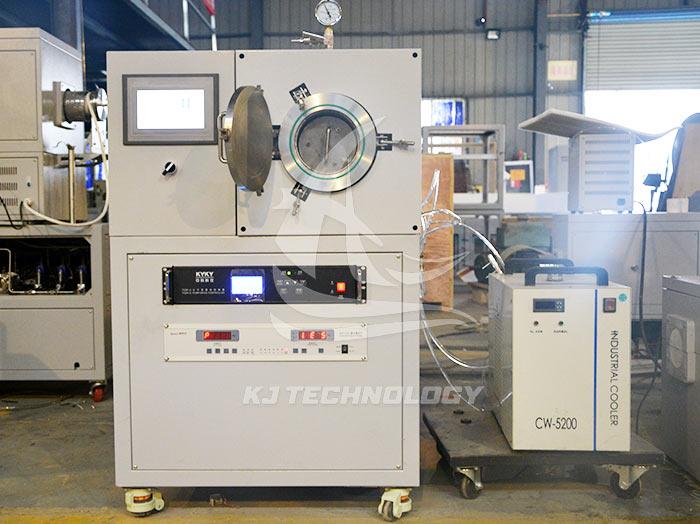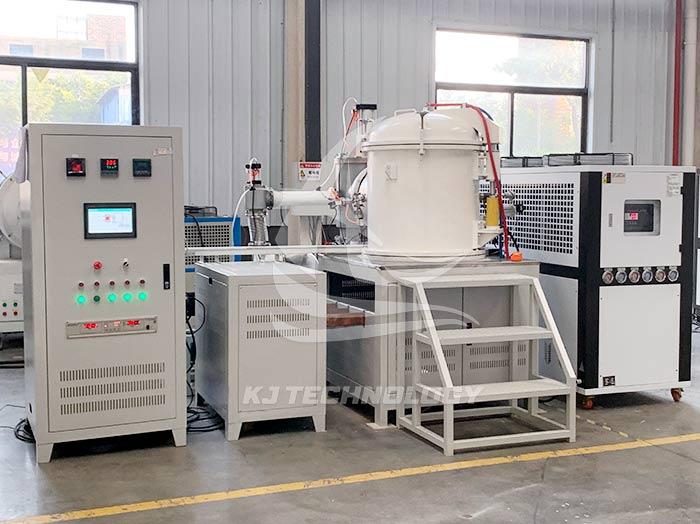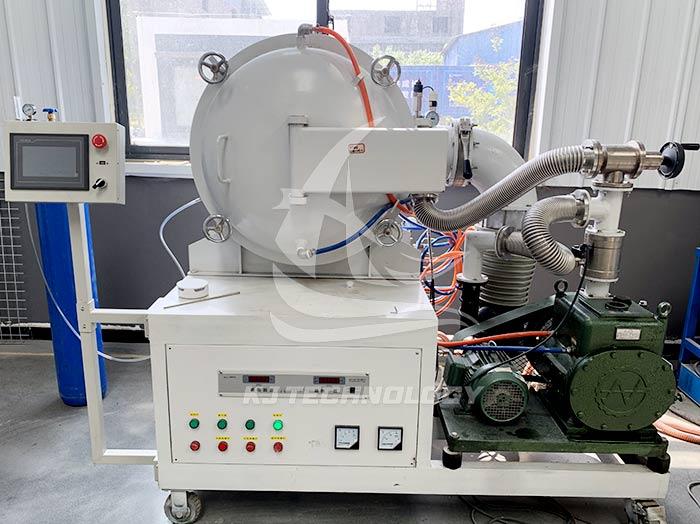Vacuum graphite high-temperature furnace
 11-06-2025 Author: KJ technology
11-06-2025 Author: KJ technology
Graphite high-temperature vacuum furnace is an industrial equipment that processes materials at high temperatures (usually up to 1600 ℃ to 2800 ℃) and under vacuum or specific atmospheric conditions. The following is a detailed introduction to it:
1. Working principle
The graphite high-temperature vacuum furnace generates high temperature through resistance heating, induction heating, and other methods, raising the temperature inside the furnace to the temperature range required for graphitization of carbon materials. At high temperatures, carbon atoms in carbon materials undergo rearrangement and crystallization, gradually forming a graphite crystal structure. At the same time, the vacuum system extracts air from the furnace to create a high vacuum environment, effectively eliminating impurity gases and moisture, and improving the purity of the material.
2. Core Features
High temperature processing capability: able to provide a high temperature environment to meet the needs of graphitization transformation of carbon materials, with a maximum temperature of 2800 ℃.
Vacuum or atmosphere control: Through a vacuum system or atmosphere control system, precise control of the vacuum degree or specific atmosphere inside the furnace is achieved to prevent sample oxidation or contamination.
High purity material processing: High purity graphite is used as the heating element and furnace material to avoid impurities evaporating and contaminating the workpiece at high temperatures, thereby improving the purity and performance of the material.
Accurate temperature control: Equipped with advanced temperature control systems, it achieves precise temperature adjustment and stable control, meeting the needs of different materials and processes.
3. Application Fields
Metal manufacturing industry: used for processes such as heat treatment, alloying, graphitization of metal materials, such as metal powder metallurgy, metal sintering, etc.
Ceramic manufacturing industry: used for sintering, crystallization and other processes of ceramic materials to improve the density, hardness and thermal stability of products.
Electronics industry: Used for the preparation of semiconductor materials, graphitization treatment, sintering, hot corrosion and other processes, which help improve the performance of electronic components.
New energy industry: In the preparation of new energy products such as lithium batteries and fuel cells, necessary processing conditions are provided, such as graphitization treatment of lithium battery negative electrode materials.
Materials science research: As an indispensable experimental equipment, it is used for synthesizing new materials and studying the physical and chemical properties of materials.
Carbon material processing: Providing high temperature and high vacuum environments helps improve the performance of carbon materials, such as the preparation and processing of carbon fibers, graphene, and other materials.
4. Technical Challenges and Solutions
Material volatilization: During high-temperature treatment, certain materials (such as silicon and lithium elements in the negative electrode of lithium batteries) may evaporate. The solution includes optimizing process parameters, adopting special furnace body design, or adding additives to suppress volatilization.
Equipment lifespan: The graphite heating element and insulation layer are prone to oxidation or erosion at high temperatures. The solution includes using high-purity and high temperature resistant graphite materials, as well as regular maintenance and upkeep of the equipment.
Temperature uniformity: Ensuring uniform temperature distribution inside the furnace is the key to improving product quality. The solution includes optimizing the furnace structure, adopting advanced heating elements and temperature control systems.
5. Development Trends
Intelligence: With the development of automation and intelligent technology, the control system of graphite high-temperature vacuum furnace will become increasingly intelligent. By introducing advanced sensors, control algorithms, and artificial intelligence technology, more precise temperature control and process optimization can be achieved.
Energy conservation and environmental protection: By adopting new energy-saving heating elements, optimizing furnace structure, and improving thermal efficiency, energy consumption and emissions are reduced, production costs and environmental pollution are lowered.
Diversification: With the continuous emergence of new materials and processes, the application range of graphite high-temperature vacuum furnaces will become increasingly widespread. In the future, this device will be more widely used in fields such as new energy, biomedicine, and aerospace.








